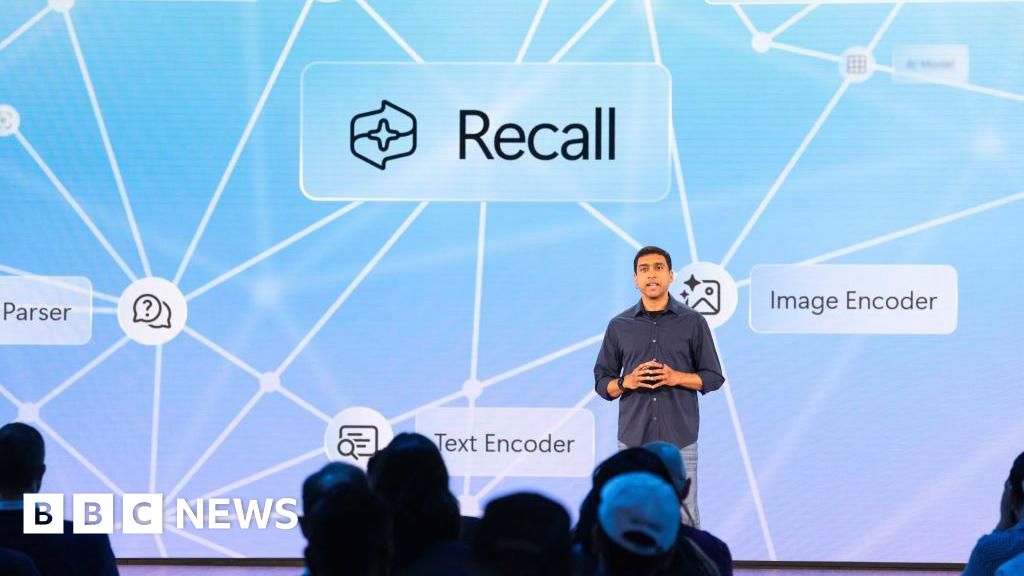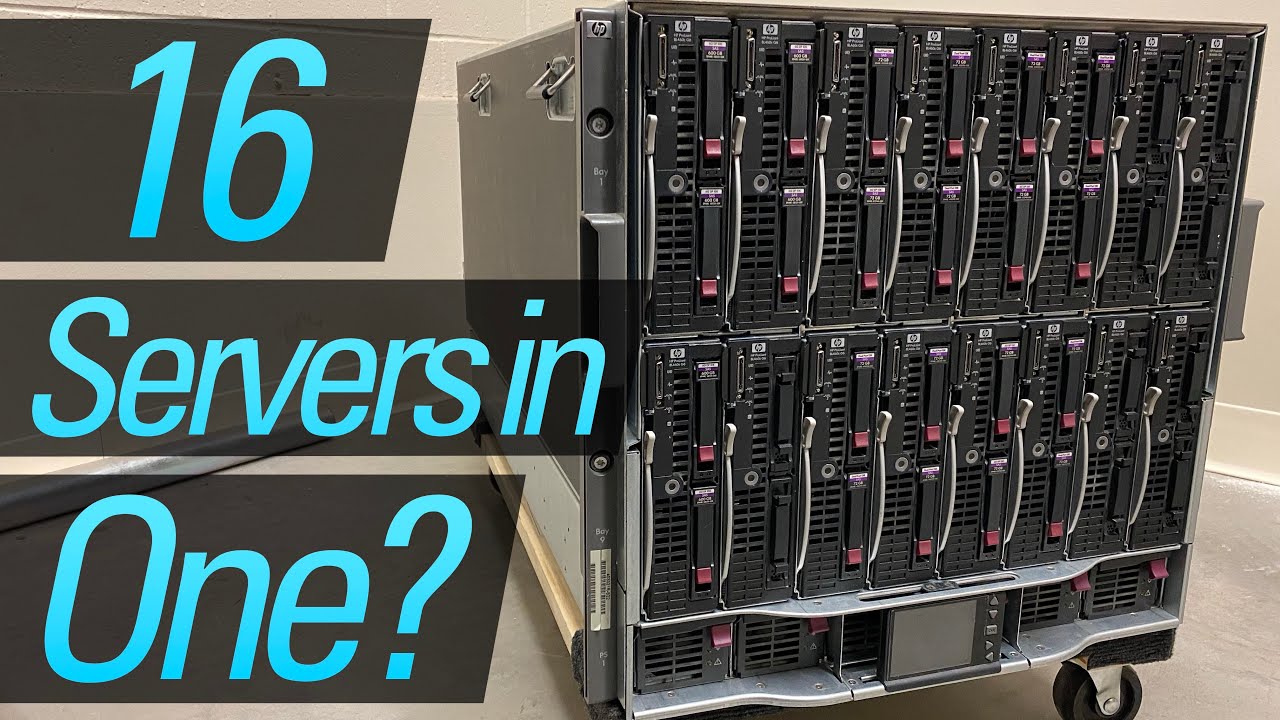Technology
Steam will let you sue Valve now

Steam just removed its forced arbitration policy, opening the door for lawsuits against its parent company, Valve. In an update on Thursday, Steam says its subscriber agreement “now provides that any disputes are to go forward in court instead of arbitration.”
Many companies include a forced arbitration clause in their user agreement, waiving a person’s right to a trial in court. Arbitration involves settling a dispute outside a legal system before an impartial third party. This method is often faster but may not get the best results for consumers, as arbitrators don’t need to consider the law when issuing a decision.
Previously, Steam’s user agreement said, “you and Valve agree to resolve all disputes and claims between us in individual binding arbitration” for all disputes related to Steam, your account, hardware, or the company’s content and services. The new agreement eliminates any mention of a binding arbitration policy.
Steam doesn’t say why it decided to suddenly remove the forced arbitration clause. As pointed out by 404 Media, a group of plaintiffs recently challenged Valve’s forced arbitration policy and were able to file a class action lawsuit over Steam’s dominance.
Servers computers
INDORACK RACK SERVER 20U SEBELUM KIRIM EKSPEDISI

OKTHA STORE TOKOPEDIA
source
Technology
Microsoft to re-launch ‘privacy nightmare’ AI screenshot tool

Microsoft says it has “listened to feedback” following a privacy row over a new tool which takes regular screenshots of users’ online activity.
It was labelled a potential “privacy nightmare” by critics when it was unveiled in May 2024 – prompting the tech giant to postpone its release.
It now plans to relaunch the artificial intelligence (AI) powered tool in November on its new CoPilot+ computers.
Some of its more controversial features have been stripped out – for example, it will be opt-in whereas the original version could not be switched off.
The controversy over Recall had led the Information Commissioner’s Office (ICO), the UK’s data watchdog, to “make enquiries” with the tech giant about the tool.
It said it had now been informed that a “series of changes” had been made to the product.
“We will be continuing to assess Recall as Microsoft moves toward launch”, it said in a statement.
When it initially announced the tool at its developer conference in May, Microsoft said it used AI “to make it possible to access virtually anything you have ever seen on your PC”, and likened it to having photographic memory.
It said Recall could search through a users’ past activity, including their files, photos, emails and browsing history.
It was designed to help people find things they had looked at or worked on previously by searching through desktop screenshots taken every few seconds.
But critics quickly raised concerns, given the quantity of sensitive data the system would harvest, with one expert labelling it a potential “privacy nightmare.”
Recall was never made publicly available.
A version of the tool was set to be rolled out with CoPilot+ computers – which Microsoft billed as the fastest, most intelligent Windows PCs ever built – when they launched in June, after Microsoft told users it had made changes to make it more secure.
But its launch was delayed further and has now been pushed back to the autumn. The company has also announced extra security measures for it.
“Recall is an opt-in experience. Snapshots and any associated information are always encrypted,” said Pavan Davuluri, Microsoft’s corporate vice president of Windows and devices.
He added that “Windows offers tools to help you control your privacy and customise what gets saved for you to find later”.
However a technical blog about it states that “diagnostic data” from the tool may be shared with the firm depending on individual privacy settings.
The firm added that screenshots can only be accessed with a biometric login, and sensitive information such as credit card details will not be snapped by default.
Recall is only available on the CoPilot+ range of bespoke laptops featuring powerful inbuilt AI chips.
Professor Alan Woodward, a cybersecurity expert at Surrey University, said the new measures were a significant improvement.
“Before any functionality like Recall is deployed the security and privacy aspects will need to be comprehensively tested,” he said.
However he added he would be rushing to use it.
“Personally I would not opt-in until this has been tested in the wild for some time.”
Science & Environment
America’s coal communities could help the U.S. triple nuclear power

A bulldozer moves coal that will be burned to generate electricity at the American Electric Power coal-fired power plant in Winfield, West Virginia.
Luke Sharrett | Bloomberg | Getty Images
The planned restart of Three Mile Island is a step forward for nuclear power, but the U.S. needs to deploy new plants to keep up with rising electricity demand, one of the nation’s top nuclear officials said this week.
The U.S. needs to at least triple its nuclear fleet to keep pace with demand, slash carbon-dioxide emissions and ensure the nation’s energy security, said Mike Goff, acting assistant secretary for the Office of Nuclear Energy at the Department of Energy.
The U.S. currently maintains the largest nuclear fleet in the world with 94 operational reactors totaling about 100 gigawatts of power. The fleet supplied more than 18% of the nation’s electricity consumption in 2023.
The U.S. needs to add 200 gigawatts of nuclear, Goff told CNBC in an interview. This is roughly equivalent to building 200 new plants, based on the current average reactor size in the U.S. fleet of about a gigawatt.
“It’s a huge undertaking,” Goff said. The U.S. led a global coalition in December that formally pledged to meet this goal by 2050. Financial institutions including Goldman Sachs and Bank of America endorsed the target at a climate conference in New York City this week.
Constellation Energy‘s plan to restart Three Mile Island by 2028 is a step in the right direction, Goff said. The plant operated safely and efficiently, only shutting down in 2019 for economic reasons, he said.
The reactor that Constellation plans to re-open, Unit 1, is not the one the partially melted down in 1979.
Microsoft will purchase electricity from the plant to help power its data centers. Goff said the advent of large data centers that consume up to a gigawatt of electricity only reinforces the need for new reactors.
“A lot of the data centers are coming in and saying they do need firm, 24/7, baseload clean electricity,” Goff said. “Nuclear is obviously a perfect match for that,” he said.
But restarting reactors in the U.S. will only provide a small fraction of the nuclear power that is needed, he said. There are only a handful of shuttered plants that are potential candidates for restarts, according to Goff.
“It’s not a huge number,” Goff said of potential restarts. “We need to really be moving forward also on deploying plants,” he said.
From coal to nuclear
Coal communities across the U.S. could provide a runway to build out a large number of new nuclear plants. Utilities in many parts of the U.S. are phasing out coal as part of the clean energy transition, creating a supply gap in some regions because new generation is not being built fast enough.
Recently shuttered coal plants, those expected to retire, and currently operating plants with no estimated shutdown date yet could provide space for up to 174 gigawatts of new nuclear across 36 states, according to a Department of Energy study published earlier this month.
Coal plants already have transmission lines in place, allowing reactors at those sites to avoid the long process of siting new grid connections, Goff said. The plants also have people experienced in the energy industry who could transition to working at a nuclear facility, he said.
“We can actually get a significant cost reduction by building at a coal plant,” Goff said. “We can maybe get a 30% cost reduction compared to just going on a greenfield site.”
Cost overruns and long timelines are major hurdles for building new nuclear plants. The expansion of the Vogtle plant in Georgia with two new reactors, for example, cost more than $30 billion and took around seven years longer than expected.
Expanding operational nuclear plants and building at retired sites in the U.S. could create a pathway for up to 95 gigawatts worth of new reactors, according to the DOE study. Between coal and nuclear sites, the U.S. potentially has space for up to 269 gigawatts of additional nuclear power.
The potential capacity would depend on whether advanced, smaller reactors are built at the sites, or larger reactors with a gigawatt or more of power.
More electricity could potentially be generated if the smaller reactors were rolled out on a large scale because there is space for more them, according to the DOE study. Some of these smaller advanced designs, however, are still years away from commercialization.
But rising electricity demand from data centers, manufacturing and the electrification of the economy could provide a catalyst to build the larger plants as well, according to Goff. The Three Mile Island restart, for example, would bring back just under a gigawatt of power to meet Microsoft’s needs.
“That increased power demand, that will lead toward an additional push toward those gigawatt size reactors as well,” he said.
Restarts likely to secure greenlight
While reactor restarts aren’t a silver bullet, shoring up and maintaining the existing fleet is crucial, Goff said. The U.S. went through a decade-long period in which reactors were shutting down because they could not compete with cheap, abundant natural gas.
The economics are changing, however, with tax support from the Inflation Reduction Act and nuclear increasingly valued for its carbon-free attributes, Goff said.
“One of the issues with the economics, especially in the non-regulated utilities, was there was no value necessarily for clean, baseload electricity,” he said. “There is a lot more recognition of the need for that clean, firm, reliable baseload for nuclear”
Constellation’s decision to restart Three Mile Island follows in the footsteps of the Palisades nuclear plant in Michigan. The private owner, Holtec International, plants to restart Palisades in 2025. The two restarts are subject to review and approval by the Nuclear Regulatory Commission.
“They are an independent agency, but I expect if the safety cases are presented, they’re going to approve it,” Goff said of those potential restarts.
“Constellation obviously operated the Three Mile Island plant for years, and has a very large fleet of reactors that they’ve operated safely and efficiently,” he said. “They will continue to have a great expertise in moving those plants to continue their safe operation.”
But finding additional plants to restart could prove difficult, said Doug True, chief nuclear officer at the Nuclear Energy Institute.
“It gets harder and harder,” True previously told CNBC. “A lot of these plants have already started the deconstruction process that goes with decommissioning and the facility wasn’t as thoroughly laid up in a way that was intended to restart in any way.”
Servers computers
Let's Check Out an Old Blade Server System with 32 CPUs!

Many, many servers these days run as virtual machines — but there was a time when virtualization was still just catching on, and companies needed physical servers to be as dense as possible. So let’s look at a blade server system from around 2010 that packs 32 CPU sockets and weighs 500 pounds!
Image of C7000 chassis will full-height blades: https://commons.wikimedia.org/wiki/File:HP_BladeSystem_c7000_Enclosure.jpg#/media/File:HP_BladeSystem_c7000_Enclosure.jpg
—————————————-————————————-
Please consider supporting my work on Patreon: https://www.patreon.com/thisdoesnotcompute
Follow me on Twitter and Instagram! @thisdoesnotcomp
—————————————-————————————-
Music by
Epidemic Sound (http://www.epidemicsound.com).
source
Technology
Governments bans on quantum computer exports have no basis in science


Shutterstock/Marko Aliaksandr
Imagine if governments around the world announced restrictions on the sale of rulers that are 34 centimetres long. You would be pretty confused, given there doesn’t seem to be anything special about that length – and 34cm rulers don’t exist.
Such legislation would be ludicrous, but something similar has been enacted for quantum computers in several nations (see “Multiple nations enact mysterious export controls on quantum computers“). The restrictions – which limit the export of computers with 34 or more qubits, or quantum bits, and error rates below a certain threshold – are puzzling, as such devices have no practical use, according to all published research.
But the very specificity of the number suggests some thought behind it. Clearly, someone, somewhere, is worried about nefarious use of these devices – most likely their potential to break widely used encryption methods – and wants them restricted in the name of national security.
So what is going on? There are two possibilities here: either they are wrong, as scientific evidence suggests, and pointless legislation is now being cut and pasted across the world, or they are right and have now alerted their adversaries that this is a number worth paying attention to. Both possibilities seem counterproductive, but without access to the research behind these restrictions, it is impossible to say.
One of the great strengths of science is that it is an open endeavour. For all its faults, peer review allows us to harness minds around the world to scrutinise and improve research. Our approach to making policy should be no different.
The Intergovernmental Panel on Climate Change shows just how powerful this can be. By publicly synthesising research, it has allowed policy-makers to understand what needs to be done to tackle climate change – and allowed others to use that evidence base to analyse policy decisions. Equally, published research during the covid-19 pandemic allowed for a public discussion on rules being imposed on us. Simply plucking a number from the air, as seems to be the case with quantum computers, is no way to govern.
Topics:
Technology
The best Nintendo Switch games for kids


Unlike the other major consoles on the market, Nintendo has worked hard to establish the Switch as a console for all ages. The majority of the best Switch games are made to appeal to gamers both young and old, with a great mix of big-budget games and some of the best indie games. With so many games on the market, and only more exciting upcoming Switch games, it can be difficult to tell which games are best for kids and which are better games for adults. Luckily, we have compiled a few of the most popular kids’ games for the Switch all in one place!
-

 Womens Workouts4 days ago
Womens Workouts4 days ago3 Day Full Body Women’s Dumbbell Only Workout
-

 News5 days ago
News5 days agoOur millionaire neighbour blocks us from using public footpath & screams at us in street.. it’s like living in a WARZONE – WordupNews
-

 News1 week ago
News1 week agoYou’re a Hypocrite, And So Am I
-

 Technology1 week ago
Technology1 week agoWould-be reality TV contestants ‘not looking real’
-

 Sport1 week ago
Sport1 week agoJoshua vs Dubois: Chris Eubank Jr says ‘AJ’ could beat Tyson Fury and any other heavyweight in the world
-

 Science & Environment1 week ago
Science & Environment1 week agoITER: Is the world’s biggest fusion experiment dead after new delay to 2035?
-

 Science & Environment1 week ago
Science & Environment1 week agoMaxwell’s demon charges quantum batteries inside of a quantum computer
-

 Science & Environment1 week ago
Science & Environment1 week agoHow to wrap your mind around the real multiverse
-

 Science & Environment1 week ago
Science & Environment1 week agoLiquid crystals could improve quantum communication devices
-

 Science & Environment1 week ago
Science & Environment1 week agoPhysicists are grappling with their own reproducibility crisis
-

 Science & Environment1 week ago
Science & Environment1 week agoSunlight-trapping device can generate temperatures over 1000°C
-

 Science & Environment1 week ago
Science & Environment1 week agoHyperelastic gel is one of the stretchiest materials known to science
-

 Science & Environment1 week ago
Science & Environment1 week ago‘Running of the bulls’ festival crowds move like charged particles
-

 Science & Environment1 week ago
Science & Environment1 week agoHow to unsnarl a tangle of threads, according to physics
-

 Science & Environment1 week ago
Science & Environment1 week agoQuantum ‘supersolid’ matter stirred using magnets
-

 CryptoCurrency1 week ago
CryptoCurrency1 week agoCardano founder to meet Argentina president Javier Milei
-

 Science & Environment1 week ago
Science & Environment1 week agoWhy this is a golden age for life to thrive across the universe
-

 News1 week ago
News1 week agoIsrael strikes Lebanese targets as Hizbollah chief warns of ‘red lines’ crossed
-

 Womens Workouts6 days ago
Womens Workouts6 days agoBest Exercises if You Want to Build a Great Physique
-

 CryptoCurrency1 week ago
CryptoCurrency1 week agoDZ Bank partners with Boerse Stuttgart for crypto trading
-

 CryptoCurrency1 week ago
CryptoCurrency1 week agoEthereum is a 'contrarian bet' into 2025, says Bitwise exec
-

 Womens Workouts6 days ago
Womens Workouts6 days agoEverything a Beginner Needs to Know About Squatting
-

 Science & Environment5 days ago
Science & Environment5 days agoMeet the world's first female male model | 7.30
-

 Science & Environment1 week ago
Science & Environment1 week agoCaroline Ellison aims to duck prison sentence for role in FTX collapse
-

 Science & Environment1 week ago
Science & Environment1 week agoQuantum forces used to automatically assemble tiny device
-

 Science & Environment1 week ago
Science & Environment1 week agoNuclear fusion experiment overcomes two key operating hurdles
-

 CryptoCurrency1 week ago
CryptoCurrency1 week agoBitcoin miners steamrolled after electricity thefts, exchange ‘closure’ scam: Asia Express
-

 CryptoCurrency1 week ago
CryptoCurrency1 week agoDorsey’s ‘marketplace of algorithms’ could fix social media… so why hasn’t it?
-

 CryptoCurrency1 week ago
CryptoCurrency1 week agoRedStone integrates first oracle price feeds on TON blockchain
-

 CryptoCurrency1 week ago
CryptoCurrency1 week agoBitcoin bulls target $64K BTC price hurdle as US stocks eye new record
-

 News1 week ago
News1 week agoBrian Tyree Henry on voicing young Megatron, his love for villain roles
-

 CryptoCurrency1 week ago
CryptoCurrency1 week agoCoinbase’s cbBTC surges to third-largest wrapped BTC token in just one week
-

 News5 days ago
News5 days agoFour dead & 18 injured in horror mass shooting with victims ‘caught in crossfire’ as cops hunt multiple gunmen
-

 Science & Environment1 week ago
Science & Environment1 week agoNerve fibres in the brain could generate quantum entanglement
-

 Science & Environment1 week ago
Science & Environment1 week agoTime travel sci-fi novel is a rip-roaringly good thought experiment
-

 Science & Environment1 week ago
Science & Environment1 week agoLaser helps turn an electron into a coil of mass and charge
-

 CryptoCurrency1 week ago
CryptoCurrency1 week agoCrypto scammers orchestrate massive hack on X but barely made $8K
-

 CryptoCurrency1 week ago
CryptoCurrency1 week agoLow users, sex predators kill Korean metaverses, 3AC sues Terra: Asia Express
-

 CryptoCurrency1 week ago
CryptoCurrency1 week ago‘No matter how bad it gets, there’s a lot going on with NFTs’: 24 Hours of Art, NFT Creator
-

 CryptoCurrency1 week ago
CryptoCurrency1 week agoSEC asks court for four months to produce documents for Coinbase
-

 Sport1 week ago
Sport1 week agoUFC Edmonton fight card revealed, including Brandon Moreno vs. Amir Albazi headliner
-

 CryptoCurrency1 week ago
CryptoCurrency1 week agoBlockdaemon mulls 2026 IPO: Report
-
Business1 week ago
How Labour donor’s largesse tarnished government’s squeaky clean image
-

 Technology1 week ago
Technology1 week agoiPhone 15 Pro Max Camera Review: Depth and Reach
-

 Womens Workouts7 days ago
Womens Workouts7 days agoKeep Your Goals on Track This Season
-

 Womens Workouts4 days ago
Womens Workouts4 days ago3 Day Full Body Toning Workout for Women
-

 Travel3 days ago
Travel3 days agoDelta signs codeshare agreement with SAS
-

 Science & Environment1 week ago
Science & Environment1 week agoWhy we need to invoke philosophy to judge bizarre concepts in science
-

 Science & Environment1 week ago
Science & Environment1 week agoHow do you recycle a nuclear fusion reactor? We’re about to find out
-

 News1 week ago
News1 week agoChurch same-sex split affecting bishop appointments
-

 Technology1 week ago
Technology1 week agoFivetran targets data security by adding Hybrid Deployment
-

 CryptoCurrency1 week ago
CryptoCurrency1 week ago$12.1M fraud suspect with ‘new face’ arrested, crypto scam boiler rooms busted: Asia Express
-

 CryptoCurrency1 week ago
CryptoCurrency1 week agoCertiK Ventures discloses $45M investment plan to boost Web3
-

 CryptoCurrency1 week ago
CryptoCurrency1 week agoBeat crypto airdrop bots, Illuvium’s new features coming, PGA Tour Rise: Web3 Gamer
-

 CryptoCurrency1 week ago
CryptoCurrency1 week agoTelegram bot Banana Gun’s users drained of over $1.9M
-

 CryptoCurrency1 week ago
CryptoCurrency1 week ago‘Silly’ to shade Ethereum, the ‘Microsoft of blockchains’ — Bitwise exec
-
Business1 week ago
Thames Water seeks extension on debt terms to avoid renationalisation
-
Politics1 week ago
‘Appalling’ rows over Sue Gray must stop, senior ministers say | Sue Gray
-

 News1 week ago
News1 week agoBrian Tyree Henry on voicing young Megatron, his love for villain roles
-

 Womens Workouts7 days ago
Womens Workouts7 days agoHow Heat Affects Your Body During Exercise
-

 News5 days ago
News5 days agoWhy Is Everyone Excited About These Smart Insoles?
-

 Health & fitness1 week ago
Health & fitness1 week agoThe secret to a six pack – and how to keep your washboard abs in 2022
-

 News1 week ago
News1 week ago▶️ Media Bias: How They Spin Attack on Hezbollah and Ignore the Reality
-

 Science & Environment1 week ago
Science & Environment1 week agoQuantum time travel: The experiment to ‘send a particle into the past’
-

 Science & Environment1 week ago
Science & Environment1 week agoBeing in two places at once could make a quantum battery charge faster
-

 Science & Environment1 week ago
Science & Environment1 week agoHow one theory ties together everything we know about the universe
-

 Science & Environment1 week ago
Science & Environment1 week agoUK spurns European invitation to join ITER nuclear fusion project
-

 Science & Environment1 week ago
Science & Environment1 week agoTiny magnet could help measure gravity on the quantum scale
-

 CryptoCurrency1 week ago
CryptoCurrency1 week ago2 auditors miss $27M Penpie flaw, Pythia’s ‘claim rewards’ bug: Crypto-Sec
-

 CryptoCurrency1 week ago
CryptoCurrency1 week agoLouisiana takes first crypto payment over Bitcoin Lightning
-

 CryptoCurrency1 week ago
CryptoCurrency1 week agoJourneys: Robby Yung on Animoca’s Web3 investments, TON and the Mocaverse
-

 CryptoCurrency1 week ago
CryptoCurrency1 week ago‘Everything feels like it’s going to shit’: Peter McCormack reveals new podcast
-

 CryptoCurrency1 week ago
CryptoCurrency1 week agoSEC sues ‘fake’ crypto exchanges in first action on pig butchering scams
-

 CryptoCurrency1 week ago
CryptoCurrency1 week agoDecentraland X account hacked, phishing scam targets MANA airdrop
-

 CryptoCurrency1 week ago
CryptoCurrency1 week agoBitcoin price hits $62.6K as Fed 'crisis' move sparks US stocks warning
-

 CryptoCurrency1 week ago
CryptoCurrency1 week agoVonMises bought 60 CryptoPunks in a month before the price spiked: NFT Collector
-

 CryptoCurrency1 week ago
CryptoCurrency1 week agoVitalik tells Ethereum L2s ‘Stage 1 or GTFO’ — Who makes the cut?
-

 CryptoCurrency1 week ago
CryptoCurrency1 week agoEthereum falls to new 42-month low vs. Bitcoin — Bottom or more pain ahead?
-

 News1 week ago
News1 week agoBrian Tyree Henry on his love for playing villains ahead of “Transformers One” release
-

 Womens Workouts7 days ago
Womens Workouts7 days agoWhich Squat Load Position is Right For You?
-

 News6 days ago
News6 days agoBangladesh Holds the World Accountable to Secure Climate Justice
-

 Politics1 week ago
Politics1 week agoTrump says he will meet with Indian Prime Minister Narendra Modi next week
-

 Technology1 week ago
Technology1 week agoCan technology fix the ‘broken’ concert ticketing system?
-

 Health & fitness1 week ago
Health & fitness1 week agoThe maps that could hold the secret to curing cancer
-

 Science & Environment1 week ago
Science & Environment1 week agoA new kind of experiment at the Large Hadron Collider could unravel quantum reality
-

 Science & Environment1 week ago
Science & Environment1 week agoSingle atoms captured morphing into quantum waves in startling image
-

 Science & Environment1 week ago
Science & Environment1 week agoFuture of fusion: How the UK’s JET reactor paved the way for ITER
-

 CryptoCurrency1 week ago
CryptoCurrency1 week agoHelp! My parents are addicted to Pi Network crypto tapper
-

 CryptoCurrency1 week ago
CryptoCurrency1 week agoCZ and Binance face new lawsuit, RFK Jr suspends campaign, and more: Hodler’s Digest Aug. 18 – 24
-

 Fashion Models1 week ago
Fashion Models1 week agoMixte
-

 Politics1 week ago
Politics1 week agoLabour MP urges UK government to nationalise Grangemouth refinery
-

 Money1 week ago
Money1 week agoBritain’s ultra-wealthy exit ahead of proposed non-dom tax changes
-

 Womens Workouts7 days ago
Womens Workouts7 days agoWhere is the Science Today?
-

 Womens Workouts7 days ago
Womens Workouts7 days agoSwimming into Your Fitness Routine
-

 News2 weeks ago
News2 weeks agoBrain changes during pregnancy revealed in detailed map
-

 Science & Environment1 week ago
Science & Environment1 week agoA slight curve helps rocks make the biggest splash
-

 News1 week ago
News1 week agoRoad rage suspects in custody after gunshots, drivers ramming vehicles near Boise
-

 Science & Environment1 week ago
Science & Environment1 week agoHow Peter Higgs revealed the forces that hold the universe together
-

 Science & Environment1 week ago
Science & Environment1 week agoA tale of two mysteries: ghostly neutrinos and the proton decay puzzle
-

 Politics1 week ago
Politics1 week agoLib Dems aim to turn election success into influence

You must be logged in to post a comment Login